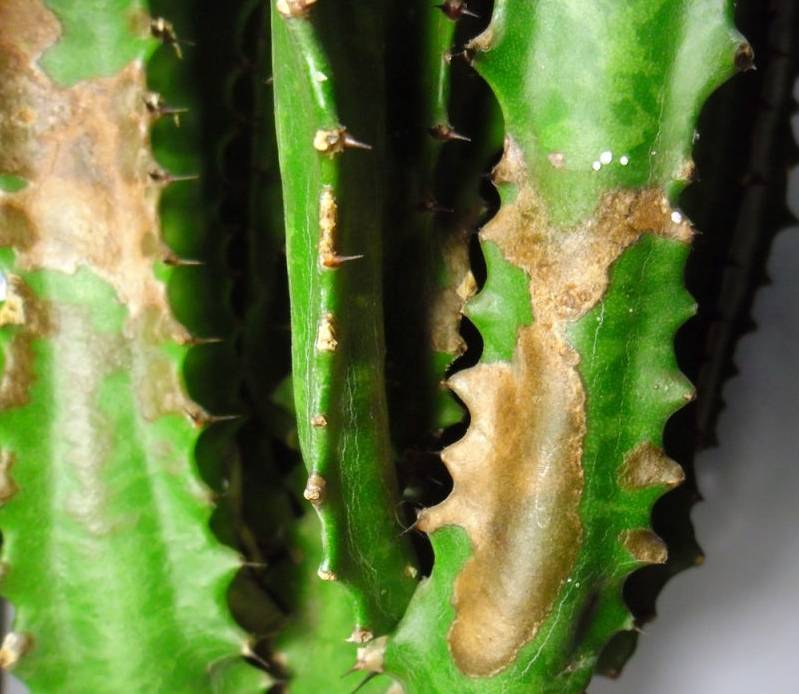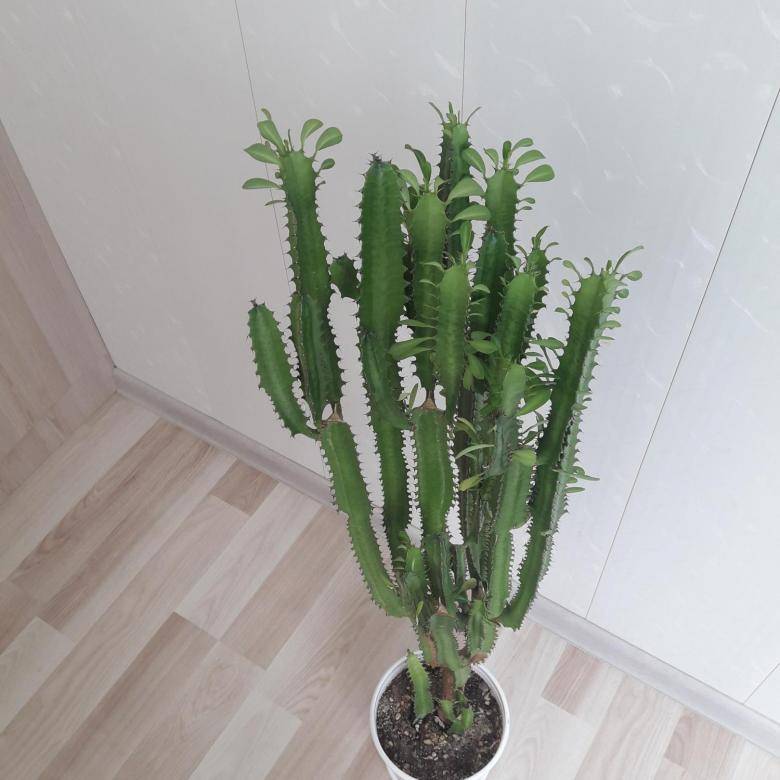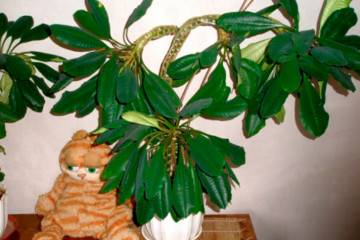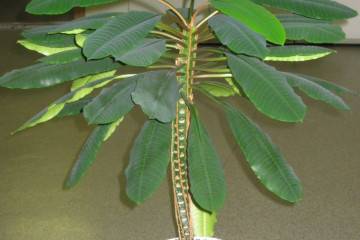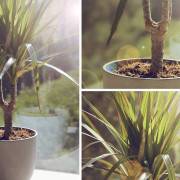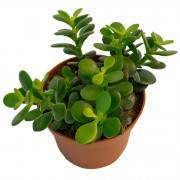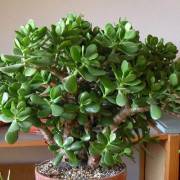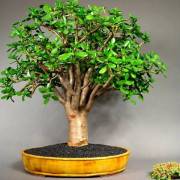Triangular spurge - home care
Content:
This article will focus on the popular succulent plant, which is often used for landscaping offices and apartments - triangular spurge. How to properly care for it, what diseases and pests can threaten the flower and how to deal with them, as well as interesting facts and superstitions associated with this plant - below.
Description of the flower
Euphorbia triangular, or triangular (euphorbia) is a stem succulent from the Euphorbia family. It has a fleshy stem with three flat edges. On the edges are the usual teardrop-shaped leaves and modified in the form of thorns.
The homeland of the plant is the subtropical zone of Africa and America. Euphorbia grows rapidly and can reach heights of up to 3 m, so it is suitable for landscaping offices or spacious apartments.
Due to the fact that this plant resembles a thorn in its appearance, succulent lovers often have a question whether the euphorbia is triangular is a cactus or not. The answer is unequivocal - no. All types of milkweed belong to the Euphorbia family, and cacti belong to the Cactus family, do not confuse them.
Benefit and harm
In ancient medicine, powder from the root of the plant was used to treat wounds after being bitten by poisonous snakes, and milky juice was used to remove warts and corns, as well as a laxative and emetic. It has the ability to absorb unpleasant odors and electromagnetic radiation, so it is advisable to place it in the kitchen and in rooms with office equipment.
Like all green plants, in the process of photosynthesis, it enriches the air with oxygen and absorbs carbon dioxide.
Caring for triangular milkweed at home
When growing a flower, it is worth remembering some nuances.
Lighting
Trihedral spurge is a light-loving plant. At home, it should be placed on the window sills of windows facing the south or southeast side. In summer, you can put it outdoors, but make sure that the flower is not in direct sunlight, this can cause burns. It is good if it is a "lacy" tree shadow or a canopy.
Temperature
This subtropical plant feels quite comfortable at home at temperatures up to 25 ° C without sudden changes. In winter, it is at rest, and the optimum temperature will be up to 18 ° C, therefore, during this period, you should not leave the pots with milkweed near appliances that emit a large amount of heat (batteries, heaters, stove).
Watering
Succulents do not like excess moisture. During the hot period, moderate weekly watering with water at room temperature will be sufficient. In winter, it will take no more than once a month, otherwise the root system can rot, which will lead to the death of the plant. With a lack of moisture, euphorbia loses leaves in order to reduce the amount of evaporation. Interestingly, the same thing happens when there is an excess of it.
Euphorbia does not need additional air humidification or spraying; regular regular ventilation of the room is sufficient.
Soil and dressing
Euphorbia needs loose, breathable and well-drained soil. You can buy a special soil for succulents in the store or prepare it yourself. To do this, it is necessary to mix peat, sand, turf soil and humus in equal proportions. Use expanded clay as drainage.
Due to its unpretentiousness, the plant does not need additional feeding, this can harm it, causing the rapid growth of the stem, which will not have time to gain strength, will become fragile and brittle. If necessary, euphorbia can be fed once a year with a special fertilizer for cacti and other succulents.
Bloom
Like any angiosperm plant, the trihedral milkweed begins flowering, but this only happens in the wild. At home, the plant never blooms.
Pruning
Since euphorbia is a very tall plant, it is often pruned in small rooms. To do this, you just need to cut off the upper part of the stem at the desired height with a sharp knife and sprinkle the cut with ash (you can crush the coal).
Reproduction
Considering that spurge does not bloom at home, it can be propagated only in a vegetative way - by cuttings. The procedure is quite simple. You need to cut off one of the side shoots, sprinkle the cut with ash or crushed coal and put it to dry for several days. After that, planting is carried out in a pot with prepared moistened soil.
If you root the cuttings immediately after cutting, it will be stressful for the plant, and it can take a long time to adapt or die altogether. Thus, it will not be difficult to propagate the plant.
Transfer
Euphorbia grows quite intensively, so it is recommended to replant young plants annually, and adults every 3-4 years. It is better to do this in the spring. The planter should be selected according to the size of the plant, but not too deep, since the root system of the succulent is superficial. At the bottom of the pot, into which it is planned to transplant a large specimen, it is recommended to put something heavy to prevent it from tipping over. Particular importance should be given to the amount of drainage, there should be a lot of it.
Diseases
Euphorbia is a triangular plant unpretentious, however, with improper care, it can also have problems:
- leaves and stem turn yellow - excess or lack of trace elements in the soil;
- brown spots appear, resembling burns - too long exposure to direct sunlight;
- leaves fall - insufficient or excessive watering, poor drainage. If there is too much excess moisture, rotting of the trunk from the bottom can be observed.
You can get rid of the listed problems by eliminating the cause of their occurrence.
Pests
Pests rarely attack euphorbia due to its poisonous juice, but sometimes it happens. It is possible to determine that a plant has been attacked by the following signs:
- aphids - black or green small insects, on the leaves they are very clearly visible;
- a spider mite betrays its presence by the presence of a cobweb;
- mealybug covers the plant with a white bloom.
If measures are not taken in a timely manner, the plant can be significantly damaged, and in the worst case, it will die. You can use commercial insecticides or spray the leaves and stems with an aqueous solution of laundry soap.
Signs and superstitions
It is believed that you should not keep euphorbia in the bedroom, especially for married couples, as barbs and problems with conception can arise in a relationship. If the plant is located near the entrance, then it is the guardian of well-being and protects the house from bad influences. Not a place for a plant where water constantly flows, since positive energy flows away with water, and negative energy remains, the owners of the house can become seriously ill.
Thus, euphorbia triangular is an unpretentious tall plant that is great for landscaping at home and office. The flower is unpretentious to care for, rarely exposed to diseases and pest attacks. Does not bloom at home, propagates vegetatively by cuttings. But it is poisonous, so it is worth thinking 300 times before bringing it into the house.



